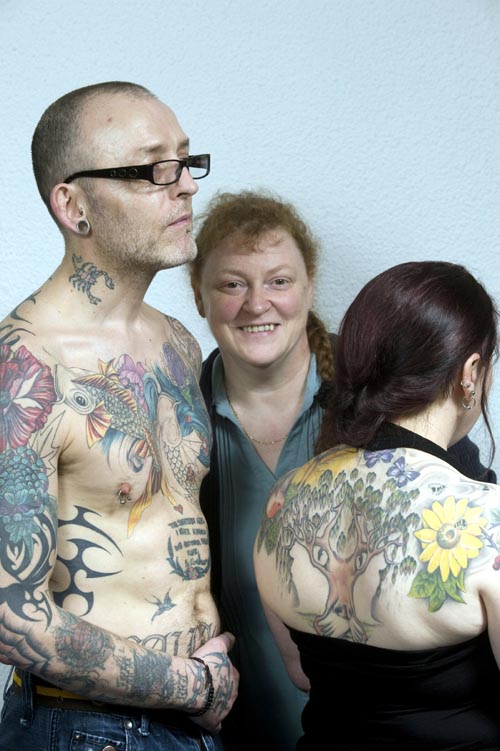
A SCOTTISH university is appealing for tattoo fans to send in images of their body art – in case they die horribly.
The images will form a massive databank at Dundee University which will be used to help forensic scientists all over the world identify victims of disaster and genocide.
Taking part in the grim project may seem the ultimate in tempting fate but Dundee University says it could result in thousands of grieving familes having loved ones’ remains returned.
The database of body piercings, tattoos and other artwork would be invaluable in major disasters such as the 2004 Asian tsunami which killed 230,000, many of whom were never identified.
It is the brainchild of researchers at the Centre for Anatomy and Human Identification (CAHID), led by Professor Sue Black.
Professor Black, who helped identify victims of war crimes in Iraq and Kosovo , said: “What we are trying to do is create a classification system of body modifications which may aid in describing in the wide variety of modifications seen.”
“This will help us to establish how common certain body mods – tattoo designs, piercings etc – are in different populations.
Professor Black said that regional or national signatures if identified on a body could help to identify where the person has come from.
“If we can do that then identifying such body mods can become a key part in important work such as Disaster Victim Identitication.
Professor Black added that victims who perished in the 2004 Asian tsunami could have been identified easier if a database like this existed.
“If you look at major incidents such as the Asian tsunami where there are thousands of bodies needing to be identified, investigators are working to narrow down the parameters which can lead to successful identification. This includes race, distinctive marks on the body, what clothing and jewellery may be on the body, and so on.
“If we can add body modifications to that list of parameters that allow us to successfully complete this hugely important process of identification then we will have added another major tool to the investigative process.
The research is part of CAHID’s wider participation in INTERPOL’S FAST and efficient international disaster victim IDentification (FASTID) project.
CAHID runs a major international training programme in Disaster Victim Identification, which has trained police officers in human identification, enabling them to be deployed to help identify victims of mass fatalities anywhere in the world.
The team have also developed groundbreaking techniques in areas such as hand identification, which has directly led to the successful prosecution of a number of paedophiles identified from images of their hands found in obscene photographs and films.
A website has been set up at www.bodymodresearch.com where people can find out more information about the project and send in images of their own tattoos, piercings and other bodymods.

